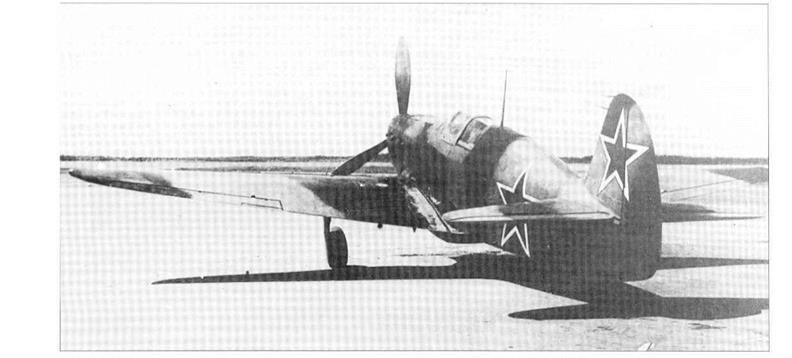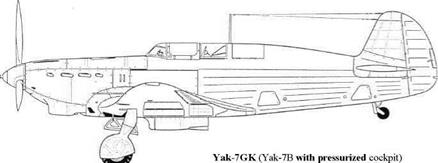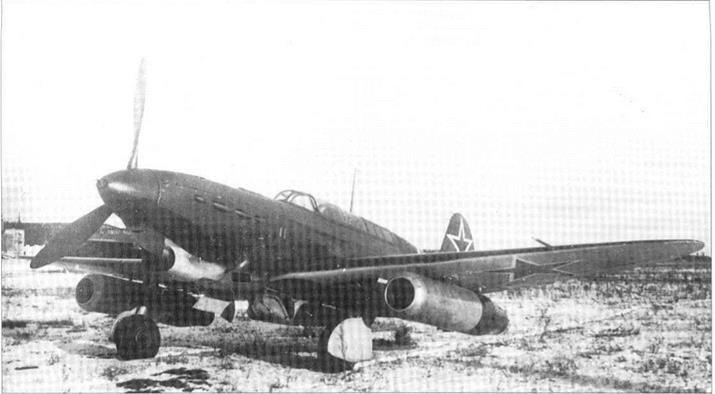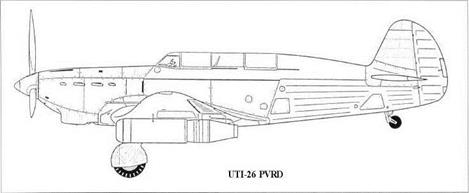Yakovlev Experimental Piston Eiigiiied Fighters


Purpose: to modify established aircraft for experimental purposes.
Design Bureau: OKB of A S Yakovlev, evacuated to Factory No 153 at Novosibirsk until in late 1944 it returned to Factory 115 on Leningradskii Prospekt, Moscow.
Fromthepioneer Y ak-1 (I-26)fighterY ako vlev derived the UTI-26 two-seat trainer, which in turn was ‘reverse-engineered’ into the Yak-7 fighter. Numerous special variants tested long-range tankage, different engines and armament, and many experimental fits.
Two series Yak-7B fighters were set aside for testing pressurized cockpits. One, No 0805, was fitted with a Shcherbakov cockpit completely encased in rubber and with a lightweight canopy giving a much better view than that of the pressurized Polikarpov bi
planes. The other, with bold white-bordered national insignia, had a hermetically sealed metal (0.8mm AMTs aluminium alloy) cockpit with a heavily framed sliding canopy. In each case the pressurization to 0.2kg/cm2 (2.85 lb/in2) was by an engine-driven blower. Both were designated Yak-7GK.
The Yak UTI-26PVRD again repeated research done with a Polikarpo v biplane, in this case the I-153/2DM-4. The DM-4 family were the ultimate types of ramjet developed by IA Merkulov. The final DM-4S had a diameter of 500mm (1ft 7%in), a length of 2.3m (7ft 61/2in) and weight of 45kg (99Ib). The two together burned ordinary petrol (gasoline) from the main aircraft tanks at the rate of 24kg (53 Ib) per minute. The test aircraft had been the UTI-26-2, the second prototype two – seater. The rear cockpit was re-equipped for
a test observer, and the main engine was changed to a l,260hp M-105PF. The pilot could switch fuel to the ramjets and press an ignition button to boost speed from 494km/h (307mph) to 513km/h (319mph) at sea level and to 633km/h (393mph) at 7,300m (23,950ft). The trouble was, though these speeds were a slight improvement over the basic aircraft, for most ofthe mission the ramjets were dead weight and offered considerable extra drag, reducing speed to 460km/h (286mph) at sea level and 564km/h (339mph) at 6km (19,685ft). The ramjets were first fitted to this aircraft in 1942, but they moved the centre of gravity too far forward and caused fuel leaks because of combustion vibration. The aircraft was put on one side until on 15 th May 1944 SNAnokhin began a proper LIl – NKAP test programme. It was judged that the ramjets were not worth having.
Unfortunately, the only known photograph of the Yak-7L is a head-on view. This merely shows that the leading edge of the wing of this aircraft was quite sharp (ie, of small radius) and that the aerofoil profile was almost symmetric except towards the root where, like the wing ofthe North American P-51 Mustang, it sloped downwards. The letter L in the designation stood for Laminarnyi (laminar). As in the Mustang wing, the maximum thickness was at almost 40 per cent chord. Probably influenced by the American fighter, this one-off aircraft is unlikely to have flown before 1943, but the date on the official photograph is unreadable.

Photograph on the opposite page: Yak-7GK.
 This page, above and below: Two views of UTI-26PVRD.
This page, above and below: Two views of UTI-26PVRD.

The fastest Yak piston-engined fighter was the Yak-3RD. The Yak-3 was smaller than any other major fighter of the Second World War, and the standard aircraft, powered by the l,260hp VK-105PF2, had a maximum speed of 646km/h (401 mph) at around 4km (13,120ft). The RD was a normal series aircraft (Saratov-built No 18-20) fitted with an RD-1 rocket engine in the tail. Developed by
V P Glushko, this engine was a pilot-controllable single-chamber unit fed by pumps driven by the main engine with 50kg (1 lOlb) of kerosene and 200kg (441 Ib) of concentrated nitric acid, supplied from tanks in the wings. Most photographs show this red-painted aircraft with the thrust chamber replaced by a pointed tailcone. The rudder was increased in chord to compensate for loss of the lower portion, and the elevators were cut off at the root and skinned with Dl alloy. OKB test pilot
V L Rastorguyev began flight testing on 22nd December 1944. The RD-1 fitted was No 009; this proved to be unreliable, and also failed to give its brochure thrust until the aircraft had climbed to about 6,500m (21,325ft). It was replaced by an RD-lKhZ (No018), with hyper – golic chemical ignition. A level speed of 782km/h (486mph) was then recorded at 7,800m (25,590ft), but malfunctions continued. On 14th May 1945 there was an explosion during a ground start. Flying resumed on 14th August 1945, and on the following day the kerosene pipe fractured. A day later (16th August), after the rocket had been shut down after a maximum-speed run, the aircraft was observed gradually to pitch over and dive into the ground, Rastorguyev being killed. The cause was never established.
The designation Yak-9P was used twice. The first was a variant with a ShVAK cannon (Pushechnyi) replacing the usual 12.7mm UBS above the engine. The second use of the designation came in 1946, when it was applied to two of the first Yak-9 fighters built at Factory No 166 at Omsk, Nos 0I-03 and 0I-04. These were completed with newly designed all-metal wings, because there was no longer a shortage of light alloys. They were exhaustively tested by Yuri A Antipov and VI Ivanov throughout July 1946, and later ten pre-production aircraft were produced at Factory No 153 at Novosibirsk. A surprising amount of effort was put into perfecting an upgraded allmetal Yak-9, because – despite the imminence ofjet fighters – no fewer than 772 were built at Factory 153, ending in March 1948. The photo shows the tail of P0415313, with special rudder and elevator instrumentation and a side-thrust rocket attached by a frame to the rear fuselage.










